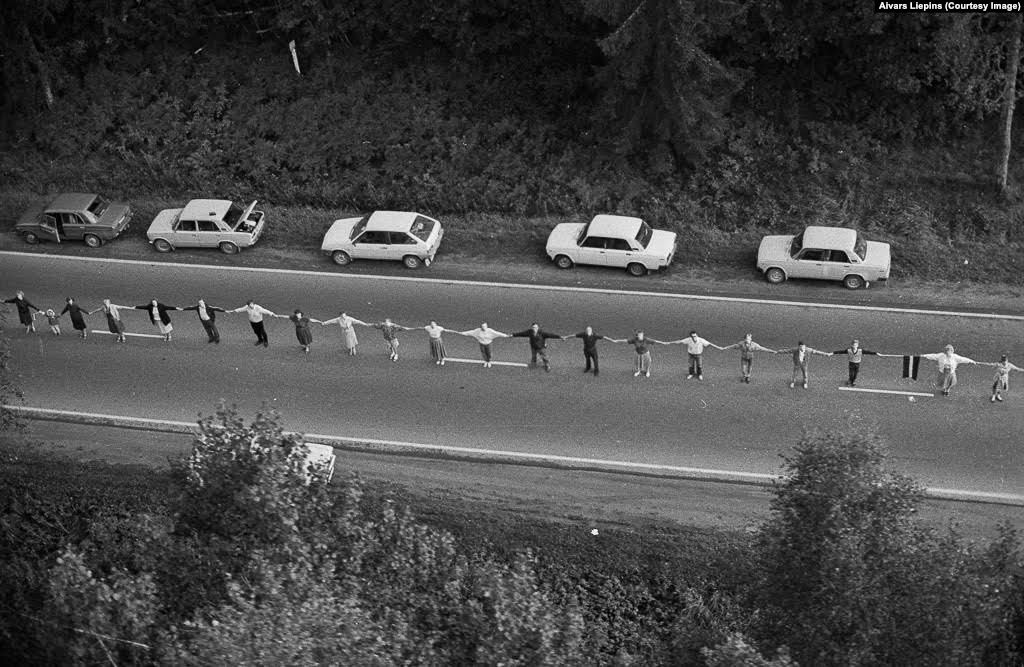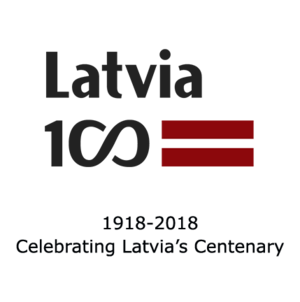30 Years Ago: How A Photographer Captured The ‘Baltic Chain’ From Above
On the evening of August 23, 1989, photographer Aivars Liepins sat in his newspaper’s basement in Riga trying to decide where best to shoot the massive demonstration about to take place outside. He needed to be everywhere but had to choose somewhere.
Suddenly, a phone rang out in the near-empty office. A woman asked if he wanted to take a helicopter ride along the protest line that would stretch across the Baltics.
Liepins had 15 minutes to get to the airport, the mysterious caller said, or the chopper would fly without him.
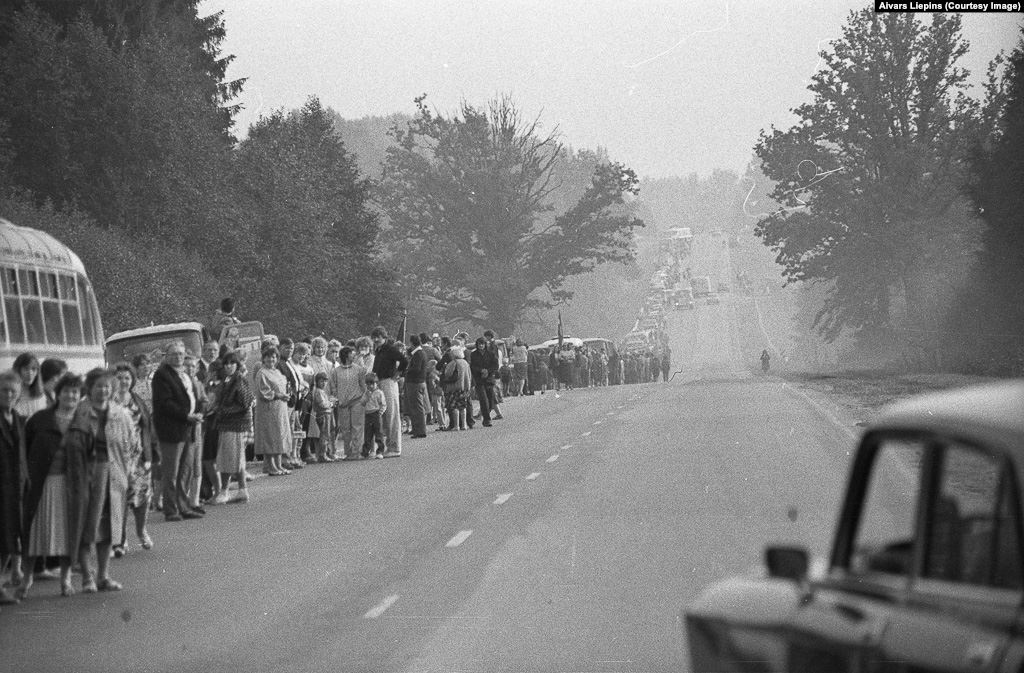
Protesters begin to gather along the route.
Outside, more than 1 million protesters were lining up to form what would become known as the Baltic Way or Baltic Chain — a continuous human chain stretching 675 kilometers through the three Baltic states, from the capital cities of Vilnius in southern Lithuania, to Latvia’s Riga, and up to Tallinn, Estonia.
The spectacular protest against Soviet occupation was timed to mark the 50th anniversary of the Molotov-Ribbentrop Pact — dubbed the “Communazi Pact” — that secretly split parts of Europe into “spheres of influence” between Stalin’s Soviet Union and Hitler’s Germany. The secret protocols in the agreement cleared the way for the 1940 Soviet invasion that folded the Baltic states into the U.S.S.R.
Tens of thousands of citizens of the three small countries were executed or exiled to Siberia through the following decades of Soviet occupation.
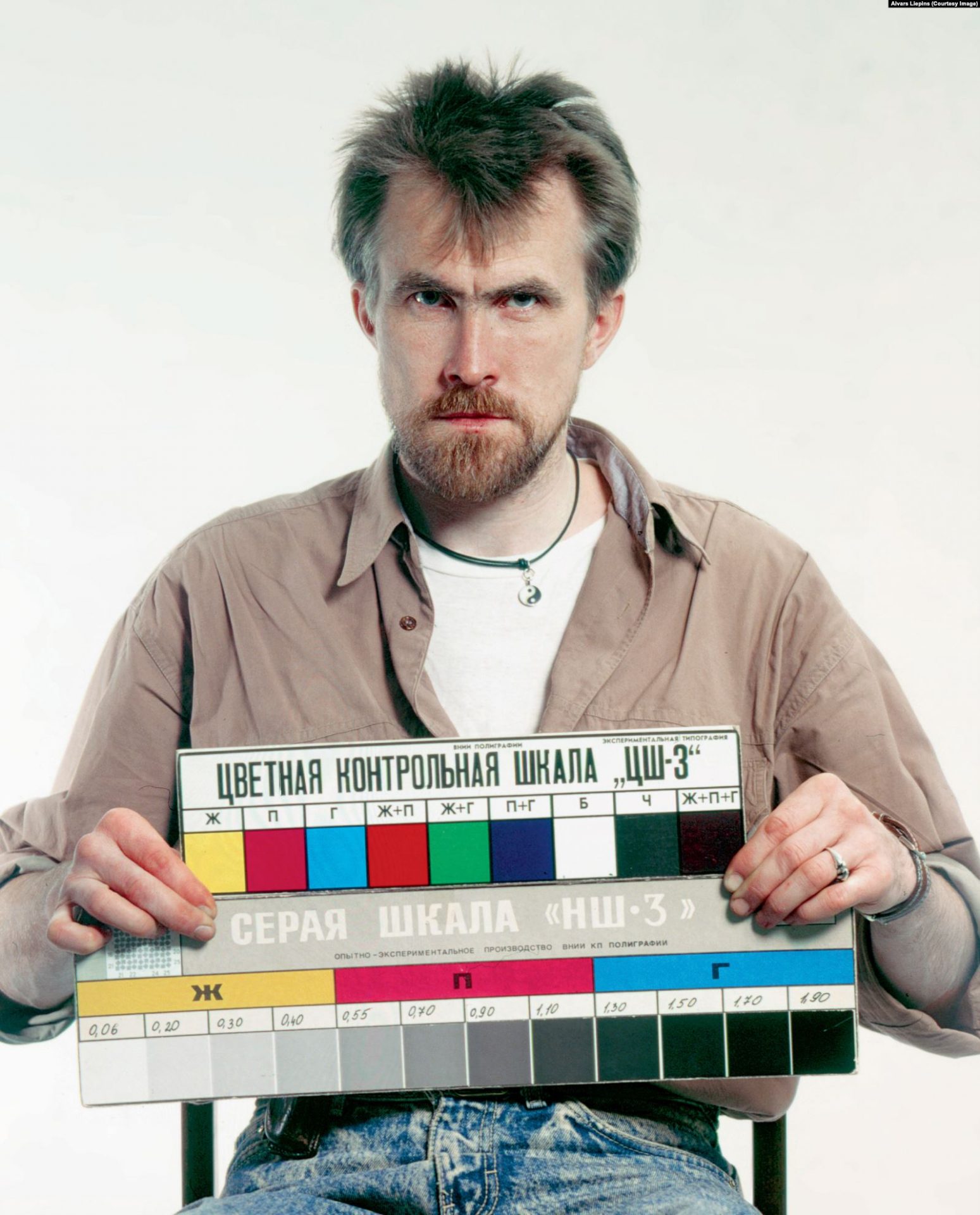
Photojournalist Aivars Liepins during the Soviet era.
For the 36-year-old Liepins, who worked for a newspaper of the anti-Soviet Popular Front political movement, the opportunity to photograph the protest from the air seemed out of reach. There was no way he could make it to to Spilve Airport – several kilometers north of central Riga — in 15 minutes.
But throwing caution to the wind, the photographer grabbed his equipment and sprinted onto the street towards a black Volga car that belonged to the communist authorities. It was reserved for the director of the Soviet publishing house, where most of Riga’s newspapers were based, but Liepins knew the chauffeur.
I just told the driver, “Help me, help me! We have to go to the airport now,” Liepins told RFE/RL by telephone 30 years later. “He didn’t know if there was a terrorist attack or what was happening, but he started driving very quickly and I explained what I knew on the way, but I didn’t really know much.”
Exactly 15 minutes later, as the Volga screeched to a halt on the tarmac, the helicopter’s rotors were already spinning. Liepins, carrying two 35mm Canon film cameras, ducked low and ran inside.
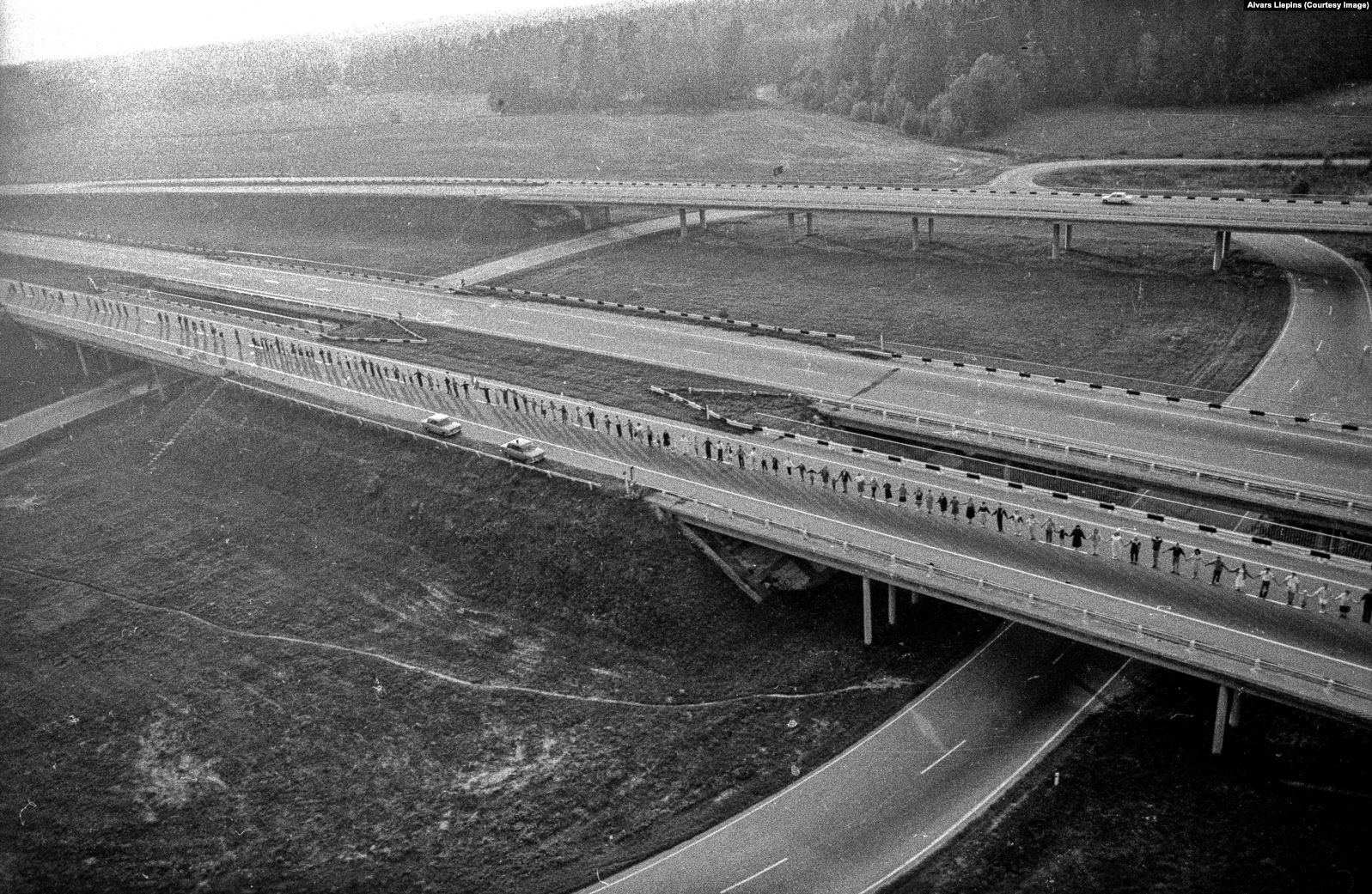
A section of the Baltic Way on the highway linking Latvia and Estonia.
When the pilot turned to him and asked, taxilike, “Where to?” Liepins decided on the highway stretching east from Riga towards Estonia.
Liepins says the many kilometers of chain he witnessed were unbroken during the 15 minutes that day when the participants were instructed to hold hands, an incredible feat in the days before social media or mobile phones could organize people en masse.
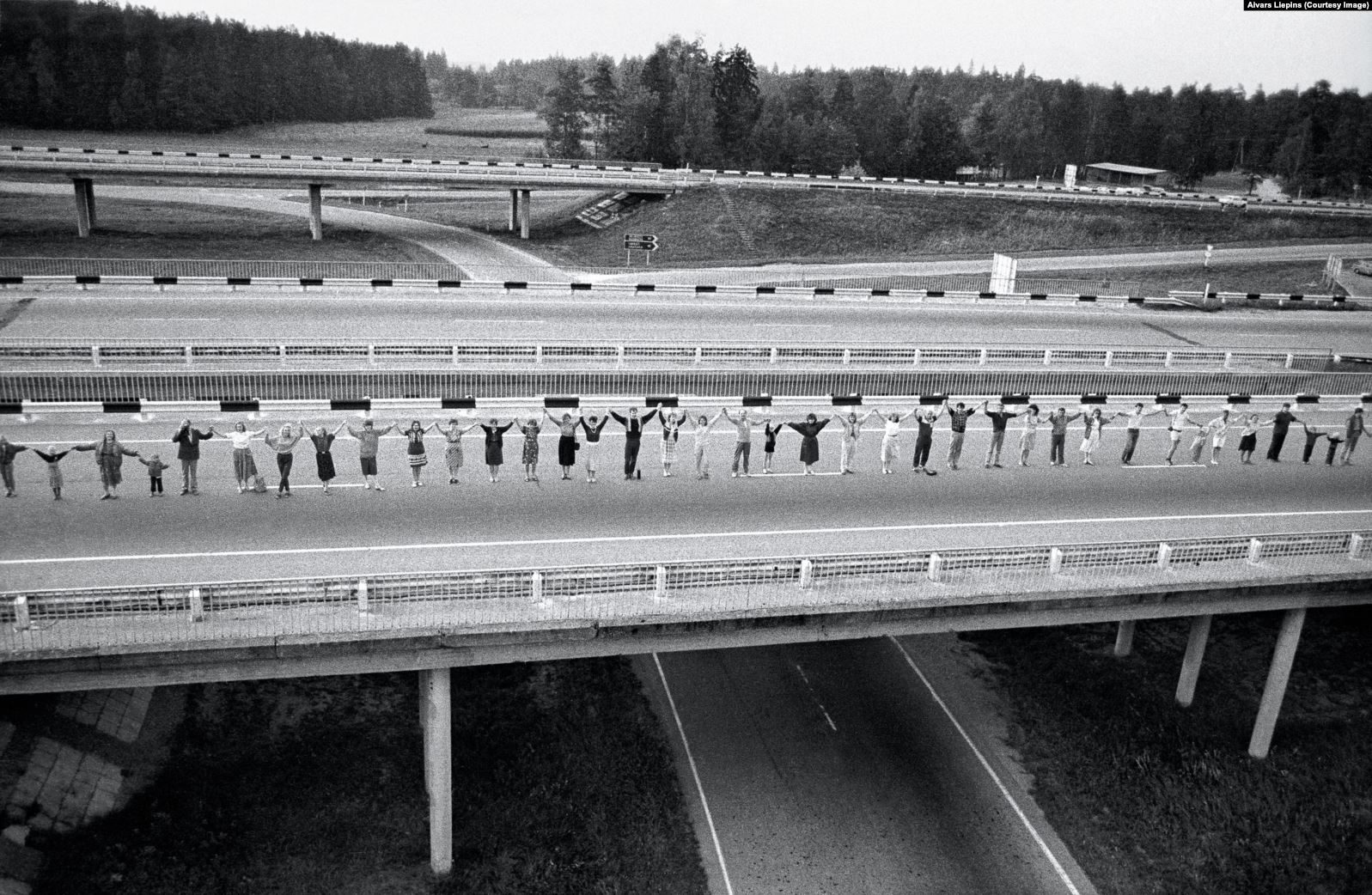
Asked about his emotions during the flight, he told RFE/RL: “I know people want to hear about big feelings I had as a Latvian, but frankly I was only thinking professionally, trying to take good pictures. Actually, sometimes I felt a little bit angry because when the people saw the helicopter they were breaking the chain to wave hello!”
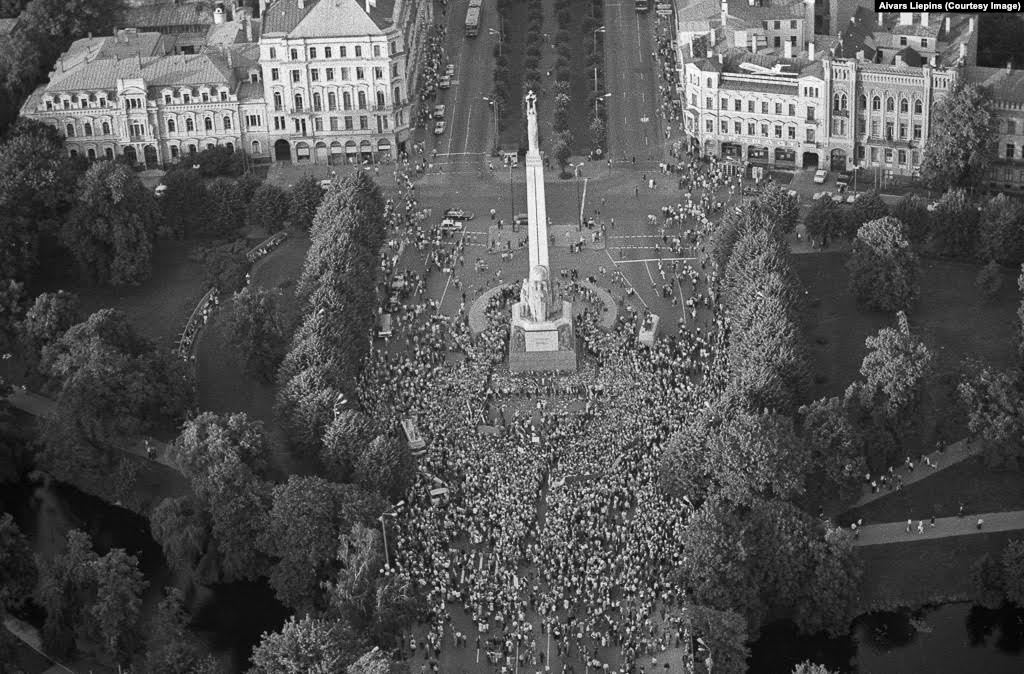
Crowds in central Riga, the midpoint of the human chain.
But despite his cold professionalism during the historic flight, Liepins says he felt “really proud” when, a year later, a Swiss photo museum made a postcard from one of his photos of the protest.
“This postcard was on sale everywhere in Europe. For me, it was very important to see this event in my small country being seen by the whole world.”
Liepins, the only professional stills photographer to have captured the iconic event from above, says it took until 2014 for him to learn how he came to be in a helicopter that day. At the 25th anniversary of the protest, he met a former leader of the anti-Soviet National Front movement.
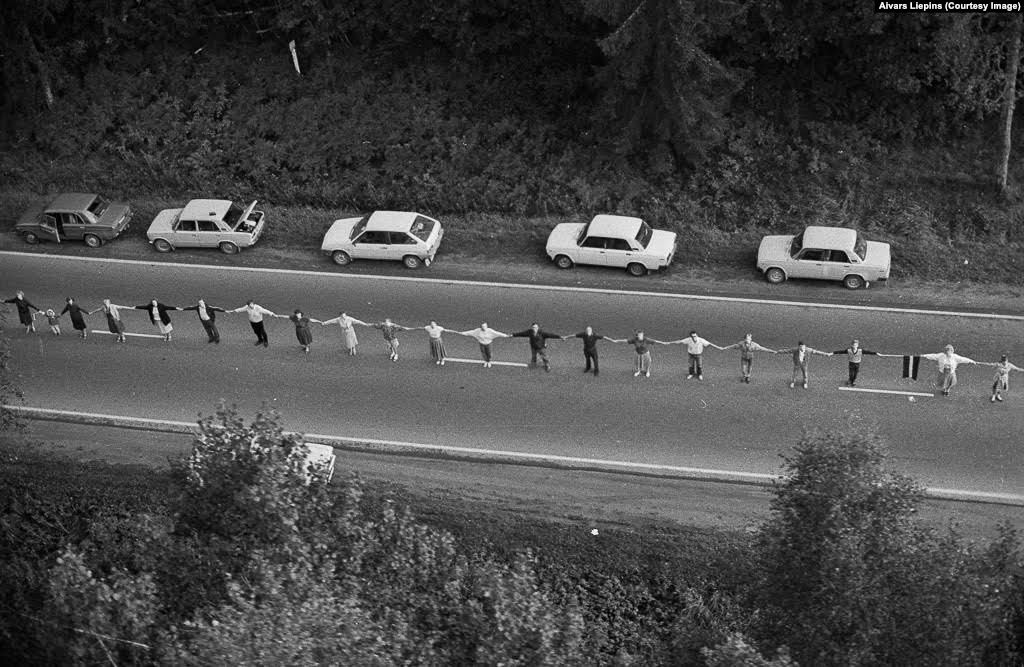
“He told me the helicopter had been hired by the National Front, but the leaders got nervous. It was a very tense time and they were worried the KGB might arrest them on the way to the airport,” so the opposition politicians drove incognito in cars to the borders, where they met with representatives of other Baltic opposition groups. But with the helicopter already paid for, someone made the last-minute decision to invite a photographer on board in the hope the human chain could at least be captured on film from above.
In the aftermath of the protest, the Baltic drive for independence from the Soviet Union was pushed into international headlines, and soon afterwards the Kremlin publicly condemned the secret protocols of the Molotov-Ribbentrop Pact.
In the summer of 1991, the Baltic states declared independence from the Soviet Union, which itself collapsed a few months later.
SOURCE
 Facebook
Facebook




